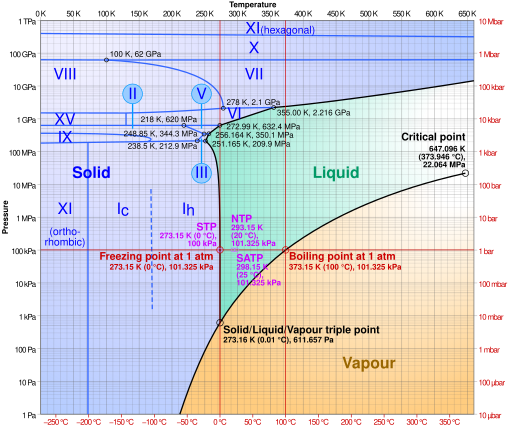I don't know what the hottest Ice Planet anyone has found has been, I started thinking about it after I found this planet:

At first I thought the only way it could remain ice at 474K would be due to the exceptionally high pressure of the planet, 5,000 atmospheres.
But I ran the calculation, and found that 5,000 atmospheres is "only" around 500 Mpa...
From the phase diagram for water (thanks Wikipedia!) I see that under this pressure, it is not even enough to form Ice VI, which would still have a melting point of only 355K (at the given pressure, it would likely have formed Ice V which is interesting stuff but not up to handling very high temperature):

I guess maybe the planet had a higher pressure atmosphere in the past, but it would have needed to be in excess of 3 GPa - which is almost 30,000 atmospheres to create Ice VII which would be enough to survive as Ice in the 474K of the planet...and that's a lot of pressure!!
Of course, maybe the composite of water, rock, and metal has helped somewhat, but the discrepancy against the given temperature and pressure is a lot to overcome.
On the other hand, maybe I'm over thinking this, and it is just a game...
-- Pete.

At first I thought the only way it could remain ice at 474K would be due to the exceptionally high pressure of the planet, 5,000 atmospheres.
But I ran the calculation, and found that 5,000 atmospheres is "only" around 500 Mpa...
From the phase diagram for water (thanks Wikipedia!) I see that under this pressure, it is not even enough to form Ice VI, which would still have a melting point of only 355K (at the given pressure, it would likely have formed Ice V which is interesting stuff but not up to handling very high temperature):

I guess maybe the planet had a higher pressure atmosphere in the past, but it would have needed to be in excess of 3 GPa - which is almost 30,000 atmospheres to create Ice VII which would be enough to survive as Ice in the 474K of the planet...and that's a lot of pressure!!
Of course, maybe the composite of water, rock, and metal has helped somewhat, but the discrepancy against the given temperature and pressure is a lot to overcome.
On the other hand, maybe I'm over thinking this, and it is just a game...
-- Pete.

